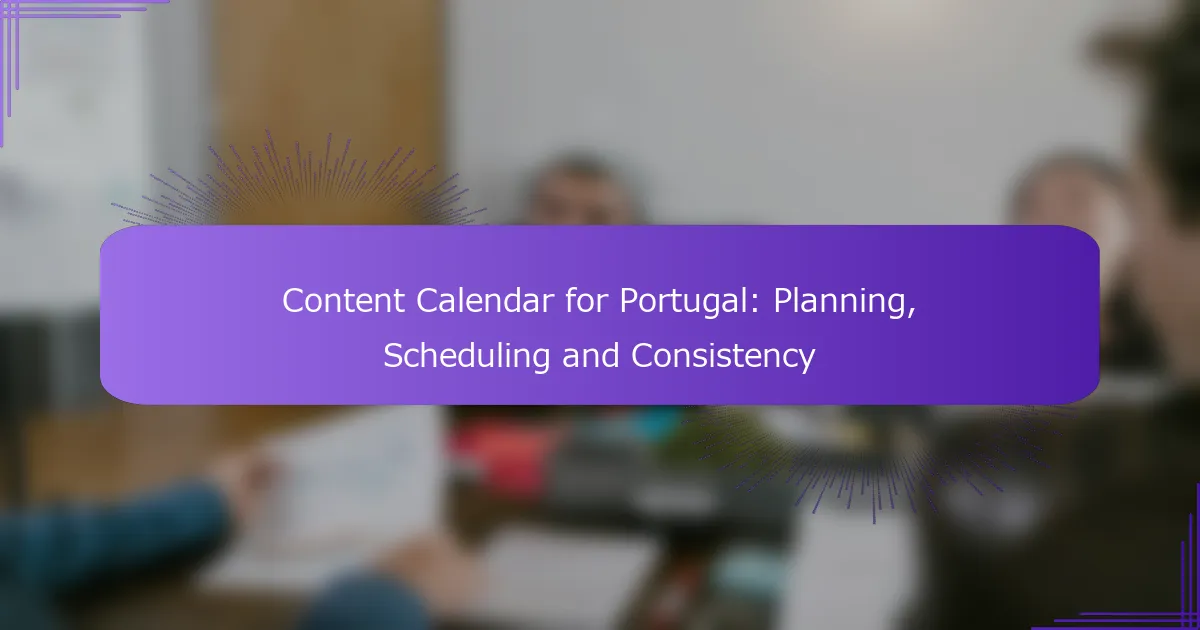Creating a content calendar for Portugal is essential for effective planning and scheduling, ensuring your content aligns with marketing goals while resonating with the local audience. By utilising various scheduling tools, you can streamline your content production process and maintain consistency in publishing. A structured approach with clear deadlines and regular performance reviews will help you adapt to audience engagement and optimise your content strategy.
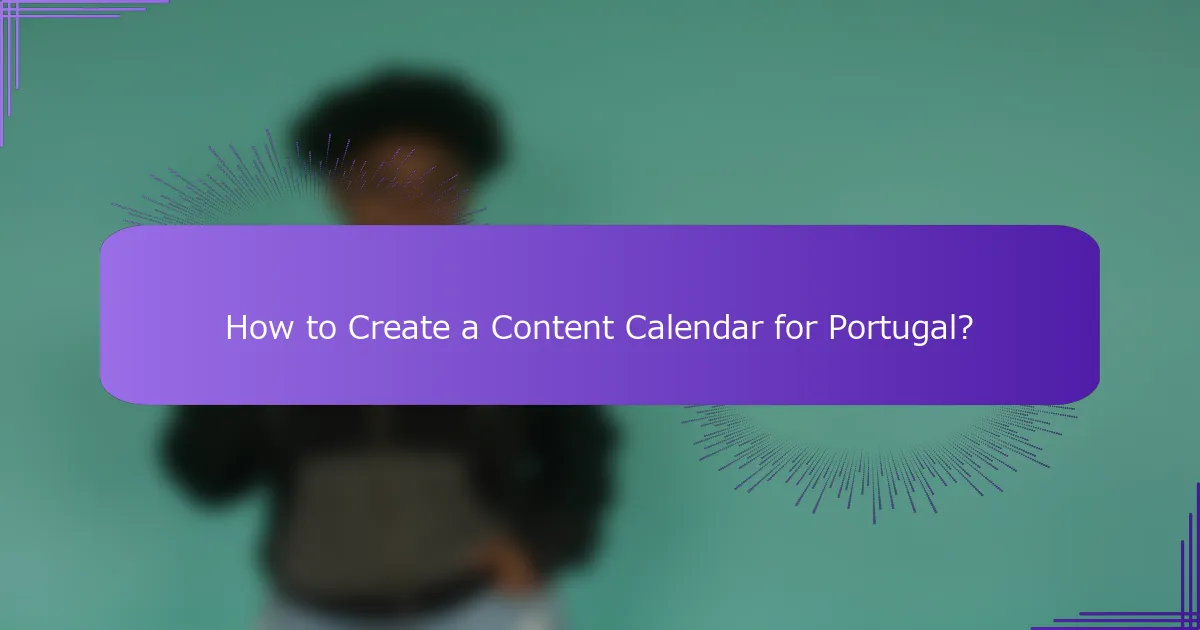
How to Create a Content Calendar for Portugal?
Creating a content calendar for Portugal involves planning and scheduling your content to ensure consistency and alignment with your marketing goals. It helps streamline your content production process while catering to the unique preferences of the Portuguese audience.
Define content goals
Start by establishing clear content goals that align with your overall marketing strategy. These could include increasing brand awareness, generating leads, or boosting engagement on social media platforms. Make your goals specific, measurable, achievable, relevant, and time-bound (SMART).
For example, you might aim to increase website traffic by 20% over the next quarter through targeted blog posts and social media updates. This clarity will guide your content creation efforts.
Identify target audience
Understanding your target audience is crucial for effective content planning. Research demographics, interests, and online behaviours of your audience in Portugal to tailor your content accordingly. Consider factors such as age, location, and cultural nuances.
Utilise surveys, social media insights, and analytics tools to gather data about your audience. This information will help you create content that resonates with them, increasing engagement and conversion rates.
Select content types
Choose the types of content that will best serve your goals and audience preferences. Options may include blog posts, videos, infographics, podcasts, or social media posts. Each type has its strengths and can cater to different segments of your audience.
For instance, if your audience prefers visual content, consider focusing on videos and infographics. Alternatively, if they seek in-depth information, long-form articles may be more effective.
Choose publishing frequency
Determine how often you will publish content based on your resources and audience expectations. A consistent publishing schedule helps maintain audience engagement and improves SEO. Common frequencies include daily, weekly, or bi-weekly posts.
For example, a weekly blog post combined with daily social media updates can keep your audience engaged without overwhelming your team. Adjust your frequency based on performance metrics and audience feedback.
Utilise tools like Trello or Asana
Leverage project management tools like Trello or Asana to organise your content calendar efficiently. These platforms allow you to create tasks, set deadlines, and collaborate with team members. This ensures everyone is on the same page regarding content production.
For instance, you can create a board for each month, listing content ideas, assigned authors, and publication dates. This visual organisation helps track progress and maintain accountability within your team.
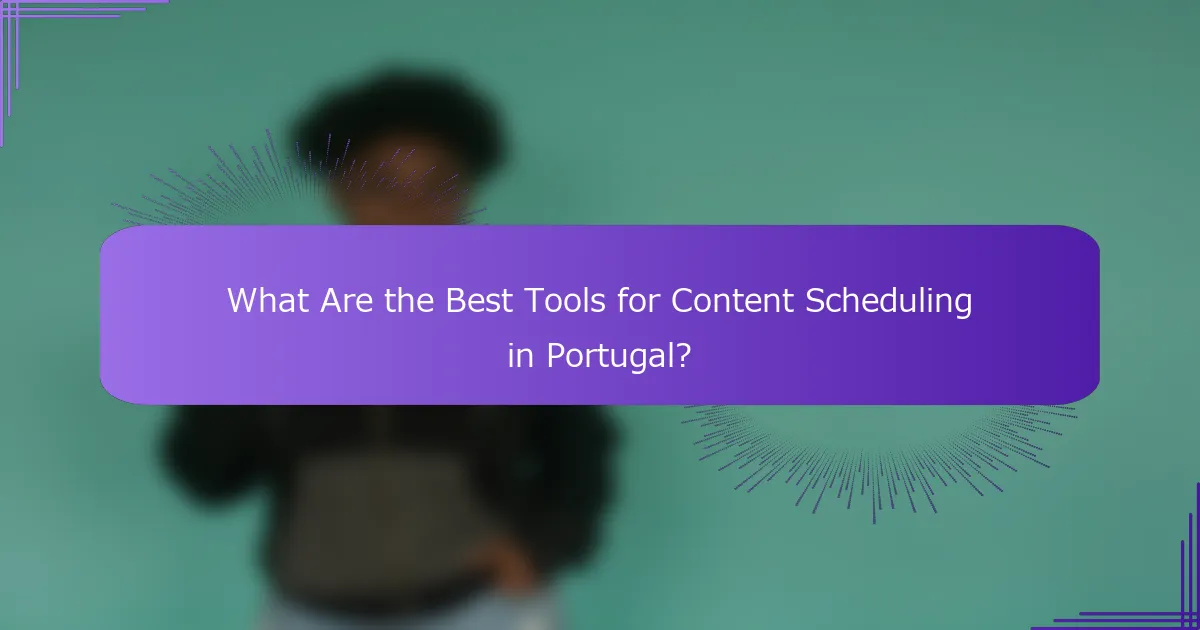
What Are the Best Tools for Content Scheduling in Portugal?
Several effective tools are available for content scheduling in Portugal, each offering unique features to enhance planning and consistency. Popular options include Google Calendar, CoSchedule, ContentCal, and Hootsuite, which cater to various needs from simple scheduling to comprehensive content management.
Google Calendar
Google Calendar is a widely used tool for scheduling content due to its simplicity and integration with other Google services. Users can create events for each piece of content, set reminders, and share calendars with team members, facilitating collaboration.
To maximise its effectiveness, colour-code different types of content or campaigns. This visual differentiation helps quickly identify priorities and deadlines. Additionally, consider syncing Google Calendar with other platforms to streamline your workflow.
CoSchedule
CoSchedule is a robust marketing calendar that combines content scheduling with social media management. It allows users to plan, publish, and promote content from a single dashboard, making it ideal for teams managing multiple channels.
Key features include drag-and-drop scheduling and analytics to track performance. For teams in Portugal, CoSchedule offers localised support and resources, ensuring users can effectively manage their content strategy in the local context.
ContentCal
ContentCal is designed specifically for content collaboration and scheduling, making it easy for teams to plan and approve content. Its user-friendly interface allows for visual content calendars, which can enhance team communication and clarity.
One notable feature is the ability to create and manage content workflows, ensuring that all team members are aligned on deadlines and responsibilities. For Portuguese users, ContentCal supports multiple languages, which can be beneficial for diverse teams.
Hootsuite
Hootsuite is primarily known for social media management but also offers effective content scheduling capabilities. Users can schedule posts across various platforms, track engagement, and analyse performance metrics from one interface.
When using Hootsuite, take advantage of its bulk scheduling feature to save time when planning content for multiple weeks. For businesses in Portugal, Hootsuite provides insights into local trends, helping tailor content to resonate with the Portuguese audience.
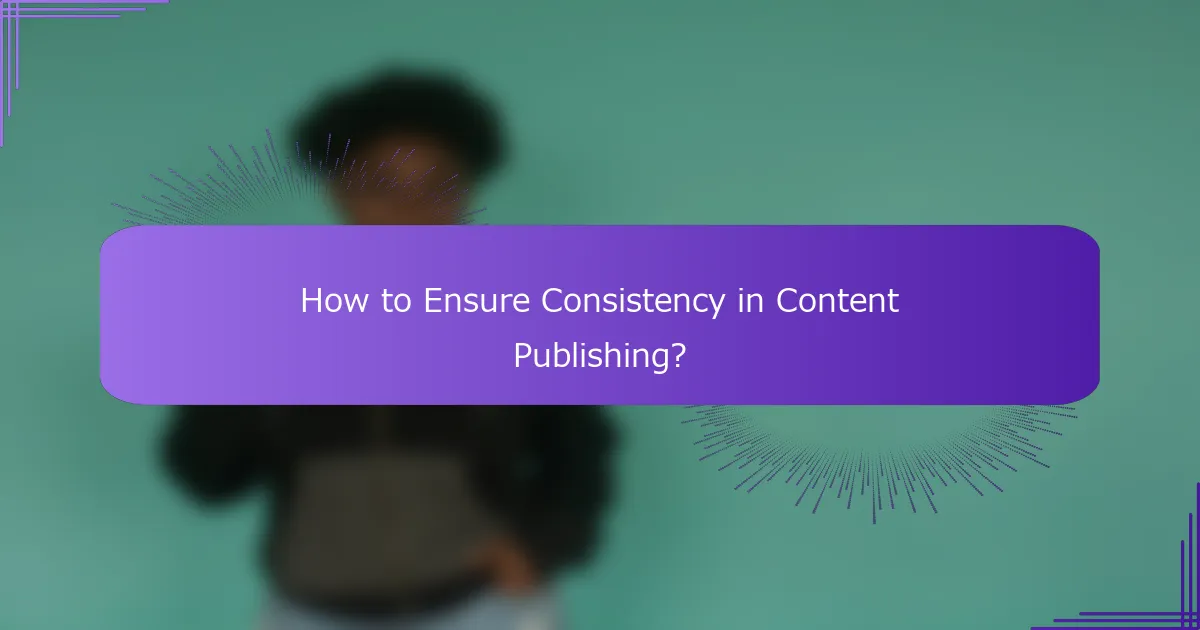
How to Ensure Consistency in Content Publishing?
To ensure consistency in content publishing, establish a structured approach that includes clear deadlines, automated sharing, and regular performance reviews. This strategy helps maintain a steady flow of content while allowing for adjustments based on audience engagement.
Set clear deadlines
Setting clear deadlines is essential for maintaining a consistent publishing schedule. Define specific dates for content creation, review, and publication to keep your team accountable and on track. For example, aim for a weekly or bi-weekly publishing cycle to ensure regular updates.
Consider using project management tools like Trello or Asana to visualise deadlines and track progress. This can help prevent last-minute rushes and ensure that each piece of content is thoroughly vetted before going live.
Automate social media sharing
Automating social media sharing can significantly enhance the consistency of your content distribution. Use tools like Buffer or Hootsuite to schedule posts in advance, ensuring that your content reaches your audience at optimal times without manual intervention.
For effective automation, create a content calendar that outlines when and where each piece of content will be shared. This allows you to maintain a steady online presence and engage with your audience regularly, even during busy periods.
Regularly review performance metrics
Regularly reviewing performance metrics is crucial for understanding how your content is performing and making necessary adjustments. Track key indicators such as engagement rates, shares, and conversions to gauge the effectiveness of your content strategy.
Utilise analytics tools like Google Analytics or social media insights to gather data. Set aside time monthly to analyse this information and refine your content calendar based on what resonates with your audience, ensuring ongoing consistency and relevance.
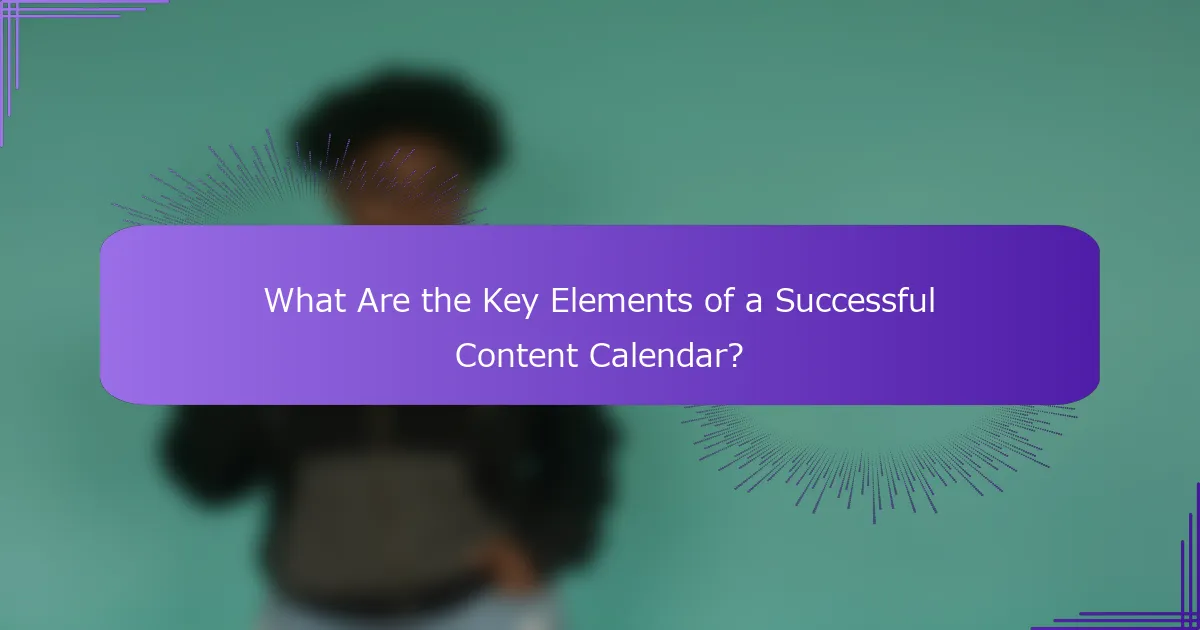
What Are the Key Elements of a Successful Content Calendar?
A successful content calendar includes clear content themes, established editorial guidelines, and defined collaboration processes. These elements ensure consistent planning and scheduling, which are vital for effective content management in any marketing strategy.
Content themes
Content themes are the overarching topics or subjects that guide your content creation efforts. They should align with your brand’s goals and resonate with your target audience in Portugal. For instance, if you’re in the travel industry, themes could include local attractions, cultural events, or travel tips specific to Portuguese destinations.
When selecting content themes, consider seasonal trends and local events that may influence audience interest. This can help in generating timely and relevant content that engages your audience effectively. Aim for a mix of evergreen and topical themes to maintain a balanced content flow.
Editorial guidelines
Editorial guidelines provide a framework for content creation, ensuring consistency in tone, style, and quality. These guidelines should outline key aspects such as voice, formatting, and citation standards. For example, if your brand uses a conversational tone, this should be clearly stated in the guidelines.
In Portugal, it’s also essential to consider language variations and cultural nuances. Make sure your guidelines address the use of European Portuguese versus Brazilian Portuguese, as this can impact audience perception and engagement. Regularly review and update these guidelines to adapt to changing trends and audience preferences.
Collaboration processes
Effective collaboration processes are crucial for a successful content calendar, especially when multiple team members are involved. Establish clear roles and responsibilities to streamline content creation and approval workflows. This could include assigning specific team members to research, writing, editing, and publishing tasks.
Utilise project management tools to facilitate communication and track progress. Regular check-ins can help ensure everyone is aligned with the content calendar and deadlines. Encourage feedback and open dialogue among team members to foster a collaborative environment that enhances content quality and consistency.
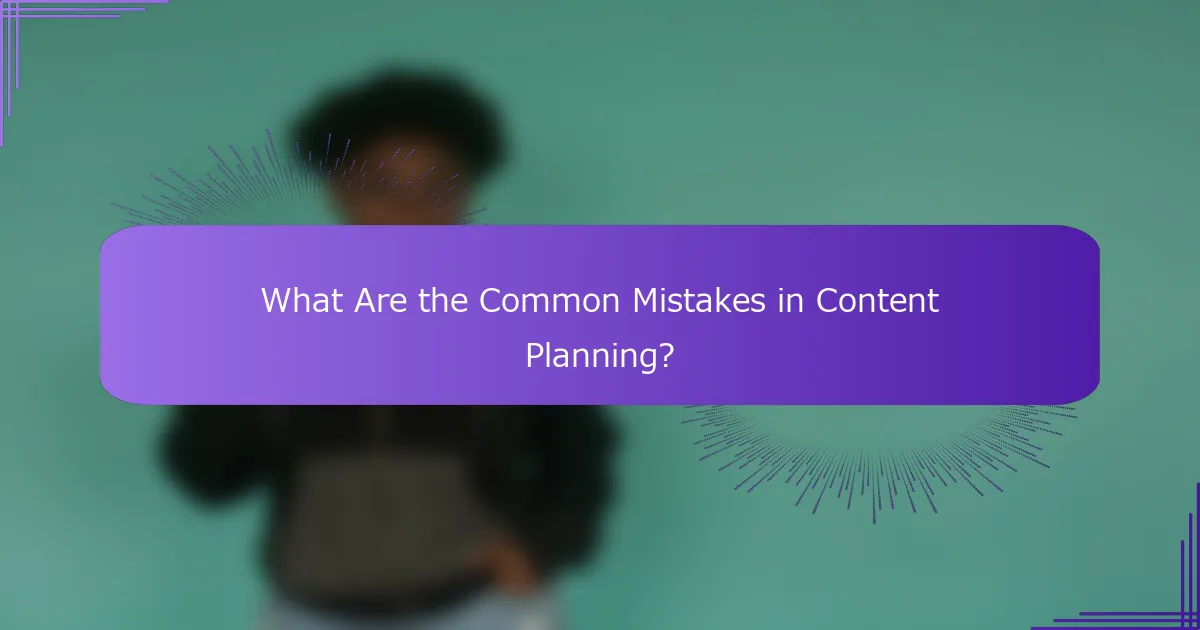
What Are the Common Mistakes in Content Planning?
Common mistakes in content planning can derail your strategy and lead to inconsistent messaging. Key errors include neglecting audience research, overlooking seasonal trends, and maintaining inconsistent branding.
Neglecting audience research
Failing to conduct thorough audience research can result in content that does not resonate with your target demographic. Understanding your audience’s preferences, pain points, and behaviours is crucial for creating relevant and engaging material.
Utilise tools like surveys, social media insights, and analytics to gather data about your audience. This information can guide your content topics, formats, and distribution channels, ensuring you meet their needs effectively.
Overlooking seasonal trends
Ignoring seasonal trends can lead to missed opportunities for timely and relevant content. In Portugal, for instance, holidays like Festa de São João or summer vacation periods can significantly impact audience engagement.
Plan your content calendar to align with these trends by incorporating seasonal themes or promotions. Consider creating content that highlights local events, seasonal products, or relevant tips that resonate with your audience during specific times of the year.
Inconsistent branding
Inconsistent branding can confuse your audience and dilute your message. It’s essential to maintain a cohesive voice, style, and visual identity across all content platforms.
Establish clear brand guidelines that outline your tone, colour schemes, and logo usage. Regularly review your content to ensure it aligns with these guidelines, helping to build trust and recognition among your audience.
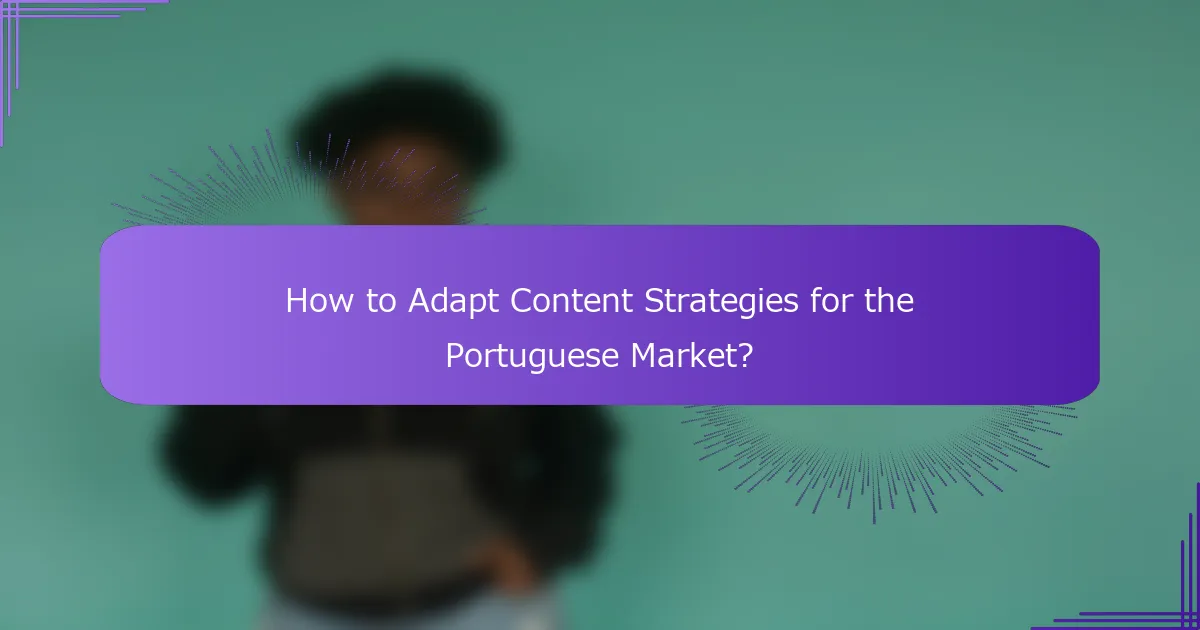
How to Adapt Content Strategies for the Portuguese Market?
To effectively adapt content strategies for the Portuguese market, it is essential to understand local culture, language nuances, and consumer behaviour. Tailoring your content to resonate with Portuguese audiences can significantly enhance engagement and brand loyalty.
Understanding Local Culture and Language
Portugal has a rich cultural heritage that influences consumer preferences. Familiarise yourself with local traditions, holidays, and values to create content that feels relevant and authentic. Additionally, using the Portuguese language correctly, including regional dialects, can make your content more relatable.
Consider incorporating local idioms and expressions that resonate with the audience. This not only shows respect for the culture but also helps in building a connection with your readers.
Identifying Target Audiences
Identifying target audiences in Portugal involves segmenting based on demographics, interests, and online behaviours. Use analytics tools to gather insights about potential customers and tailor your content accordingly. For instance, younger audiences may prefer more visual content, while older demographics might appreciate in-depth articles.
Creating buyer personas can help in understanding the motivations and challenges of your target groups. This approach allows for more focused content that addresses specific needs and preferences.
Choosing Appropriate Content Formats
Different content formats resonate differently with Portuguese audiences. Popular formats include blog posts, videos, and social media content. Experiment with various types to see what garners the most engagement.
For example, video content is increasingly popular, especially on platforms like Instagram and TikTok. Consider creating short, engaging videos that highlight your brand’s story or showcase products in action.
Scheduling and Consistency
Establishing a consistent publishing schedule is crucial for maintaining audience engagement. Analyse peak times for online activity in Portugal to determine the best times to post. Generally, weekdays during the late afternoon can yield higher engagement rates.
Utilise content calendars to plan and organise your posts. This helps ensure a steady flow of content while allowing for flexibility to respond to current events or trends in the Portuguese market.
Measuring Success and Adapting Strategies
Regularly measure the performance of your content using analytics tools. Key metrics to track include engagement rates, click-through rates, and conversion rates. This data will help you understand what works and what needs adjustment.
Be prepared to adapt your strategies based on feedback and performance. The digital landscape is constantly evolving, and staying responsive to changes in consumer behaviour is essential for long-term success in the Portuguese market.
